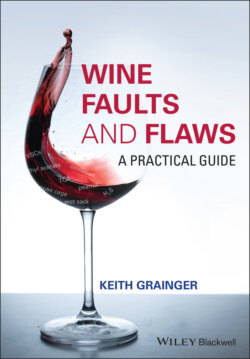Читать книгу Wine Faults and Flaws - Keith Grainger - Страница 88
2.9 Assessment of Readiness for Drinking/Potential for Ageing 2.9.1 The Life‐Cycle of a Wine
ОглавлениеThe topic of when wines are ready for drinking and the assessment of this during tasting is, by nature, complex. The life‐cycle of wines depends on several factors: origin, colour, style, structure, and particularly quality. Inexpensive wines, be they red, rosé, or white, are made to be drunk immediately. The reds will generally have been made without, or with little, post‐fermentation skin maceration that would give tannic structure. They will have been highly processed, including fine‐filtration and technical stabilisation before bottling. A period of three or four years in the bottle is the maximum keepability, and after this time they will have lost fruit and become ‘dried‐out’. The further we move up the price and quality scales, the more wines benefit from some bottle ageing. Fine red wines are designed for bottle maturation. The time taken for them to reach their peak, and just how long they will remain there, will vary according to the quality and style of the vintage, the origin of the wine, and the winemaking techniques. The intensity of fruit on the nose and flavour on the palate are important indicators, but these may be ‘closed’ in youth. The components of solid structure, including medium to high levels of tannin, medium to high acidity and appropriate alcohol content, are the key indicators to a red that will improve in bottle. In youth, these will be fragmented, and to the novice, the wine will appear hard and unbalanced. Considerable bottle ageing will be required for them to evolve and integrate. High acidity, in particular, is a great preservative, but balance is crucial.
